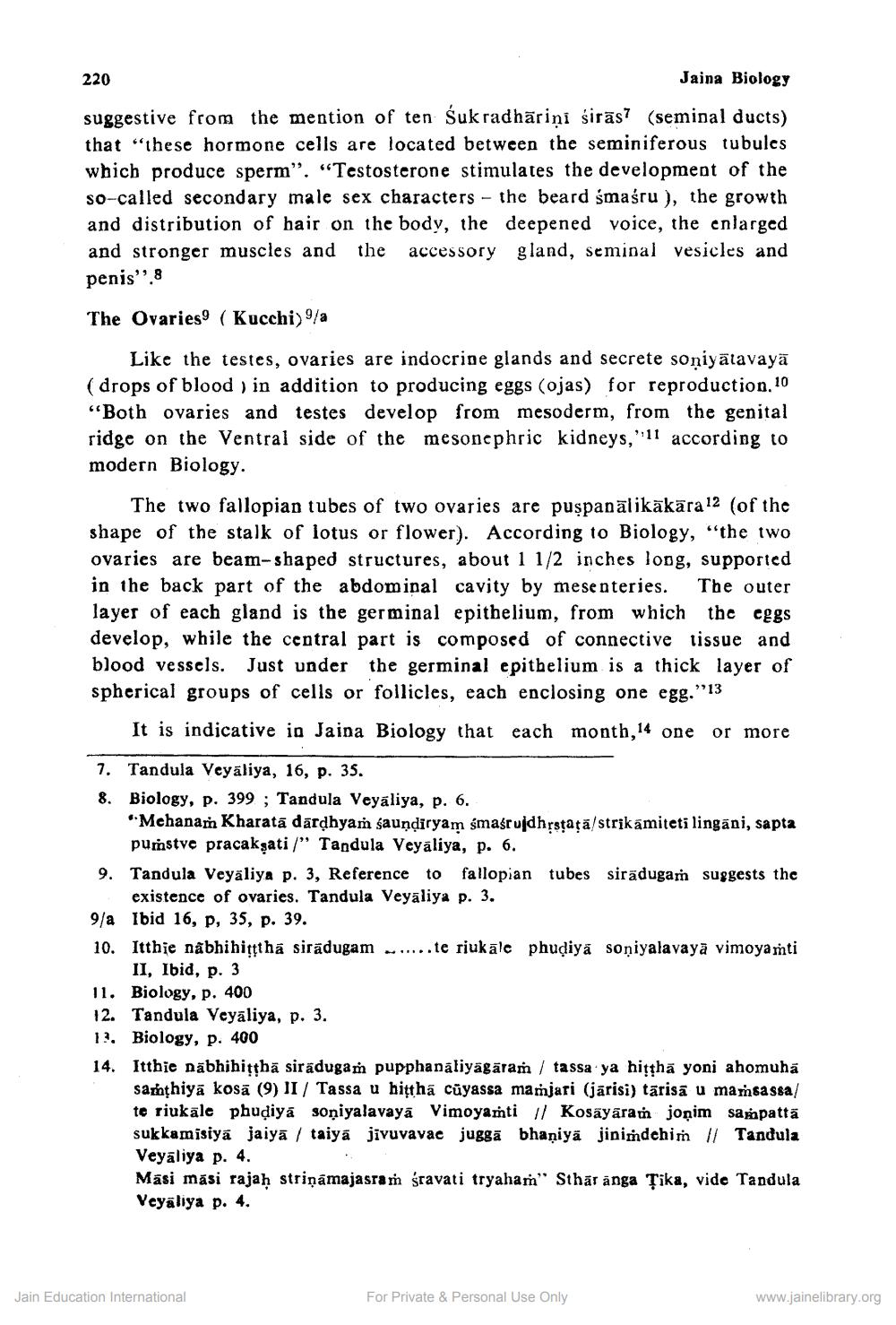________________
220
Jaina Biology suggestive from the mention of ten Suk radhārini sirās? (seminal ducts) that "these hormone cells are located between the seminiferous tubules which produce sperm". "Testosterone stimulates the development of the so-called secondary male sex characters - the beard smaśru ), the growth and distribution of hair on the body, the deepened voice, the enlarged and stronger muscles and the accessory gland, seminal vesicles and penis". 8
The Ovaries ( Kucchi) 9/a
Like the testes, ovaries are indocrine glands and secrete soniyālavaya (drops of blood ) in addition to producing eggs (ojas) for reproduction. 10 “Both ovaries and testes develop from mesoderm, from the genital ridge on the Ventral side of the mesonephric kidneys,''11 according to modern Biology.
The two fallopian tubes of two ovaries are puspanālikākāra 12 (of the shape of the stalk of lotus or flower). According to Biology, "the two ovaries are beam-shaped structures, about 1 1/2 inches long, supported in the back part of the abdominal cavity by mesenteries. The outer layer of each gland is the germinal epithelium, from which the eggs develop, while the central part is composed of connective tissue and blood vessels. Just under the germinal epithelium is a thick layer of spherical groups of cells or follicles, each enclosing one egg."13
It is indicative in Jaina Biology that each month, 14 one or more 7. Tandula Veyaliya, 16, p. 35. 8. Biology, p. 399 ; Tandula Veyaliya, p. 6.
"Mehanam Kharata därdhyam sauņdiryam smasruidhrstata/ strikāmiteti lingāni, sapta
pumstve pracakşati /” Tandula Veyaliya, p. 6. 9. Tandula Veyaliya p. 3, Reference to fallopian tubes sirādugam suggests the
existence of ovaries. Tandula Veyaliya p. 3. 9/a Ibid 16, P, 35, p. 39. 10. Itthie nabhihitthā siradugam ......te riukālc phudiya soniyalavayā vimoyamti
II, Ibid, p. 3 11. Biology, p. 400 12. Tandula Veyaliya, p. 3. 13. Biology, p. 400
Itthie nabhihitthā siradugaṁ pupphanaliyagäran / tassa ya hitthā yoni ahomuha samthiya kosā (9) JI / Tassa u hittha củyassa mamjari (jārisi) tarisa u mamsassa/ te riukāle phudiyá soniyalavayā Vimoyamti // Kosāyāra jonim sapatta sukkamisiya jaiya / taiya jivuvavae jugga bhaniya jinimdehim // Tandula Veyaliya p. 4. Māsi mási rajah striņāmajasraṁ Śravati tryaham" Sthāranga Țika, vide Tandula Veyaliya p. 4.
14.
Jain Education International
For Private & Personal Use Only
www.jainelibrary.org




